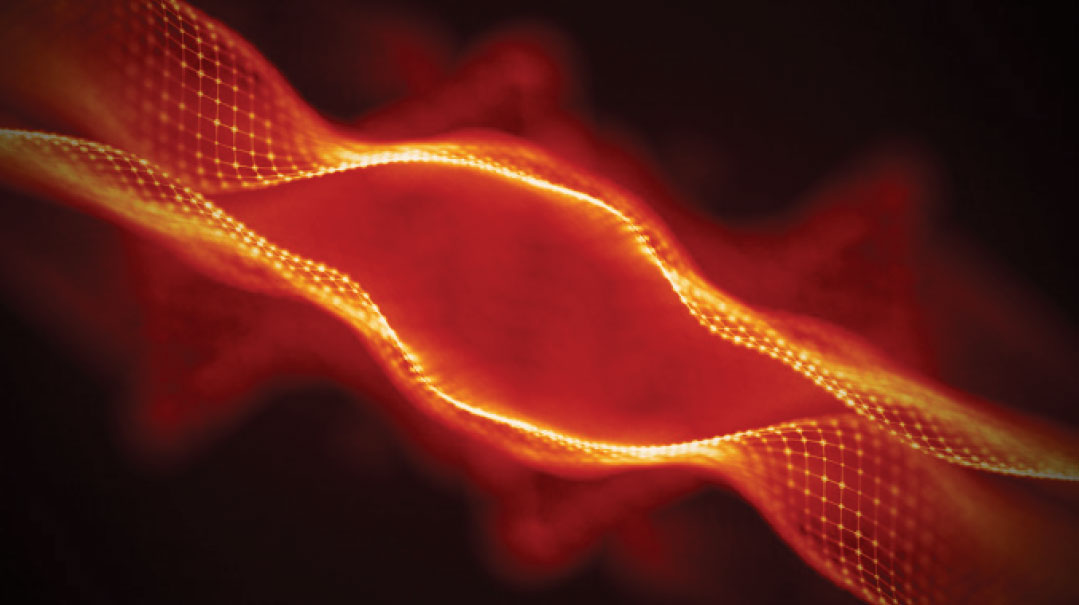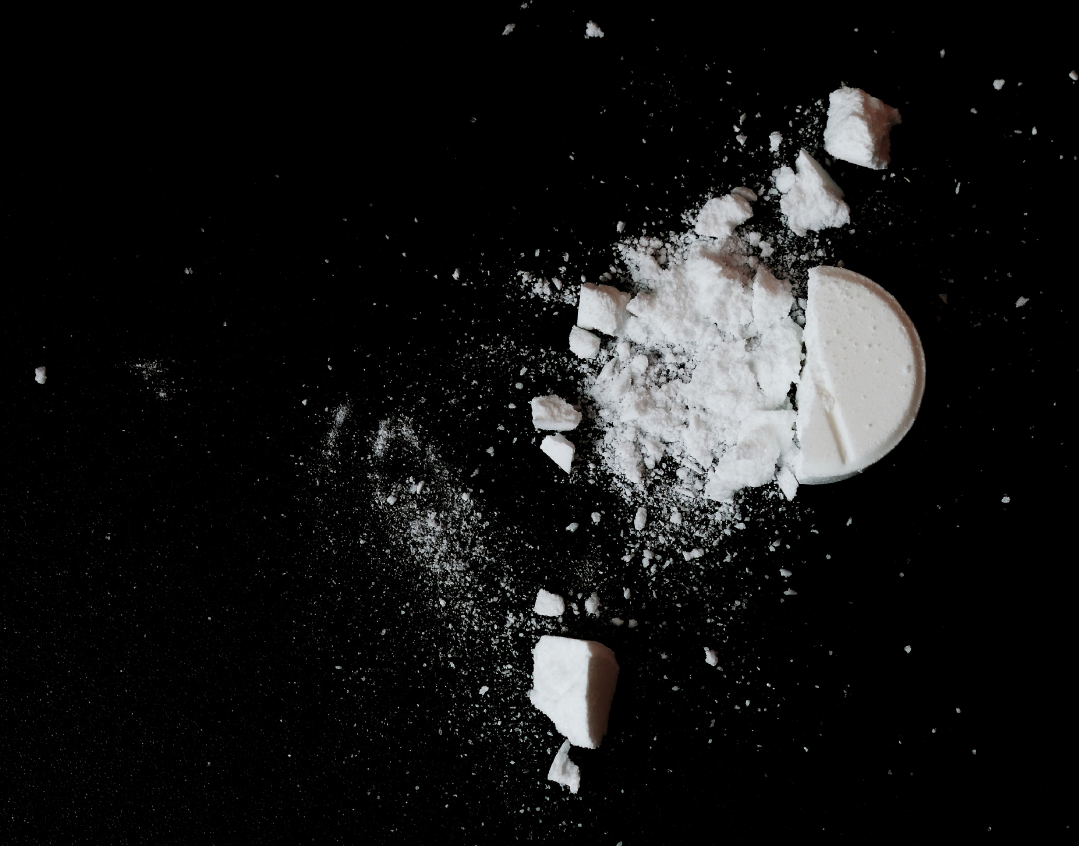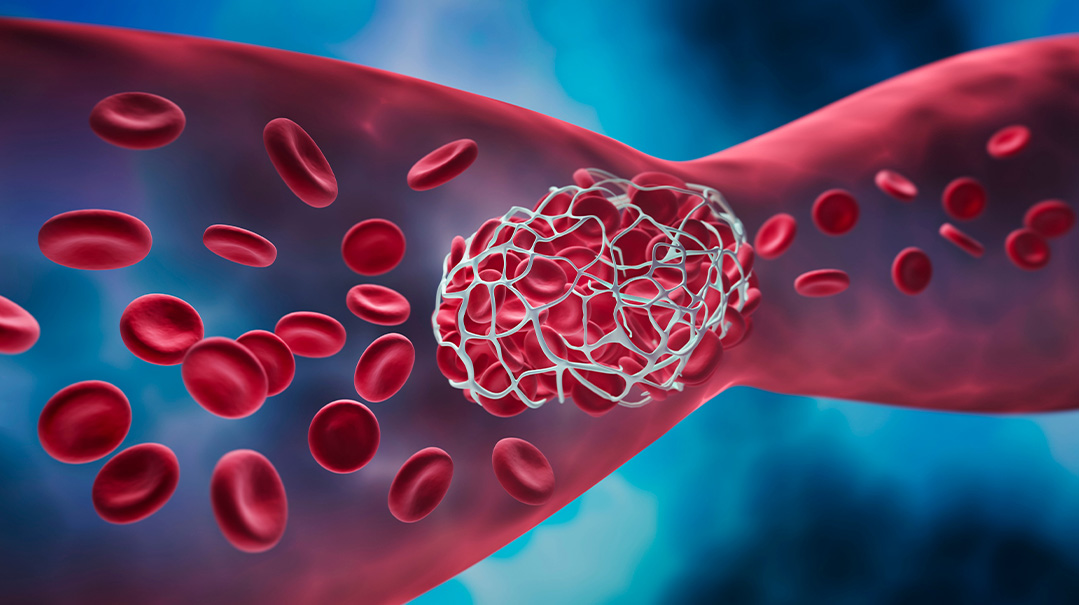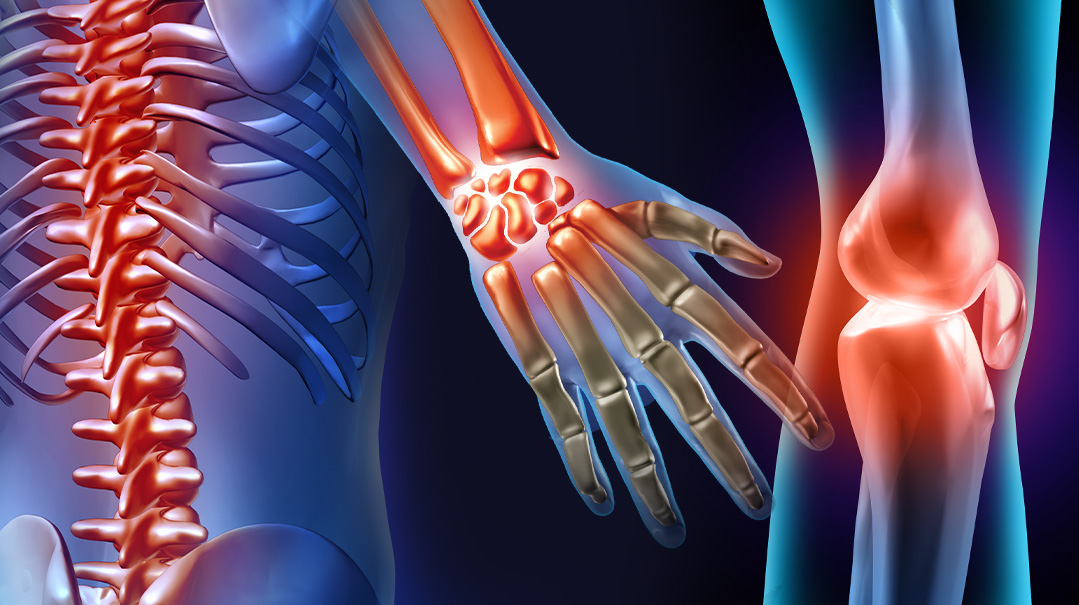They Said the Pain Was Normal

Even though this was my first birth and I was admittedly inexperienced, I felt something was seriously wrong

It was a beautiful morning in July, and I’d just given birth to my first child. My labor had been a drawn-out affair and ended in a cesarean delivery, but staring down at the tiny new life in front of me was unlike anything I’d experienced before. My doctor heaped on the compliments, proclaiming how impressed she’d been with how calm and collected I stayed throughout labor, even when wheeled into emergency surgery.
“You don’t see many first-time moms with that sort of composure or pain tolerance!” She smiled. I’m one of those quiet, logical sorts and don’t get stressed out or overexcited easily, but even my doula had been impressed with my focused breathing throughout many hours of painful contractions. A glorious feeling of relief washed over me now that it was all behind me; I could finally rest and enjoy.
The bliss was premature. Within hours I had close friends and family heaping on advice about what to do post-cesarean, what not to do, which medicine to take… some even decided to share their own experiences, the good, the bad, and the ugly.
But despite many dire predictions that the recovery would be rough and painful, I impressed the nurses with my willingness to get moving as soon as possible. And while sitting up and getting in and out of bed were definitely painful, I breathed through it and with the help of some techniques the nurses taught me, found it manageable.
Shabbos was surprisingly restful in the maternity ward. The nurses periodically offered me some stronger pain medication, but as each day passed, I felt stronger and only took some Tylenol as needed.
On Sunday morning, I was getting ready to be discharged when I realized I was in a bit more pain than I’d been in the day before. I wavered between asking the nurse for a narcotic or just waiting out the pain. I was sure it was just a fluke and I’d feel fine soon. In the end I compromised by taking the narcotic prescription home in case I needed it down the line.
We arrived home and I began to settle in. The day was a swirl of well-wishers and exclamations of who the baby looked like and all the other fun things that come along with a firstborn. But toward dusk, I realized the pain was becoming more intense — a lot more intense. I called a friend who’d had multiple C-sections to ask her what she thought.
“It’s totally normal,” she said emphatically. “The pain goes away eventually. Just try to rest as much as you can, and don’t forget to ask for help, don’t try to be superwoman.”
I also called my doula who suggested sipping peppermint-infused water. Some clueless family members mentioned a numbing ointment that might help. The more people I spoke to, the more advice I was given. But everyone said the same thing about the pain: It was to be expected after going through surgery!
I decided it would be a good idea to fill the prescription for the stronger pain meds. Finding a pharmacy that was still open and had the medication in stock was challenging, but at last my husband managed to find it. Unfortunately the medication did nothing to ease the pain.
My OB who had delivered my baby had gone on vacation the day after I gave birth, so I couldn’t reach her, but I was starting to think something was really wrong, as the pain was far worse than the first few days after I gave birth. Something wasn’t adding up. The next morning I insisted on seeing someone else in the practice. I explained to the doctor on call how painful the incision site was. He did a quick examination and gave me the all clear.
“You’re perfectly fine,” he said confidently. “I don’t see any abnormal swelling here, you probably just overdid it. Make sure to get plenty of rest.”
I got home and tried to relax and calm down, but I simply couldn’t. Even though this was my first birth and I was admittedly inexperienced, I felt something was seriously wrong.
As the day wore on, I couldn’t move an inch without feeling incomprehensible pain shooting through my body. I tried my best to get comfortable, but I simply couldn’t. Coupled with the fact that I was taking care of my newborn, I was falling apart. (Later my OB told me that if she’d been in the loop and not on vacation, she would have known right away there was a serious problem. She knew I had a high tolerance for pain as she’d been with me throughout my labor.)
Something wasn’t adding up. I called a doctor later that night on the practice’s emergency line and asked, “What needs to happen for you to take my pain seriously?” The doctor replied that if the stitches opened, I should head to the ER.
I was up all night. The pain was unbearable and nothing I tried seemed to help.
Tuesday morning, I woke up bleary-eyed and desperate. “We must see a doctor,” I said. My husband and I took a car service to my OB/GYN clinic in Manhattan and one of the doctors there came to check me. While I explained the situation, she began to examine me. Her eyes bulged, and she ran out to get a senior doctor. He took one look at me and explained I needed to go to the ER immediately as my stitches had gotten infected and had partially opened.
It was a very low moment for me, sitting in the lobby of the hospital. My baby was less than a week old, I was in excruciating pain and a hormonal wreck, and the thought of leaving my baby to check into the hospital was devastating.
When I was finally admitted into the ER, a senior doctor walked in with seven residents in tow. I said in the strongest voice I could muster, “Please don’t come look or touch me until I’m on very strong painkillers. It’s too painful.” It’s been years since all this occurred, but I marvel at my assertiveness even now. They respected my wishes and told me they’d return soon. I was given morphine, which unfortunately did very little for the pain.
The pain was so excruciating I cried for most of the night. The nurses kept coming in and shushing me, explaining I was keeping the other patients awake and they were complaining, but I couldn’t stop myself.
At one point, someone from the insurance department came to speak to me. I told her pointedly that I couldn’t speak through the pain. I also told her I needed more painkillers and a breast pump. Because I was in the gynecology ward, not the maternity ward, they didn’t have any pumps available. Unlike everyone else, the insurance lady took my pleas to heart and sped things up a little bit. She found me a pump. At least I now had one less thing to worry about.
When the doctors did their rounds in the morning, I told them two things: First, I’m in the wrong ward, I need to be in the maternity ward. Second, I need to see my baby. Baruch Hashem, they listened and transferred me to the maternity ward. My mother-in-law, who’d been watching the baby, was able to bring my baby to the hospital to be with me.
Once I was finally in the maternity ward, they took my vitals as they had done every few hours until that point, and saw I’d developed a fever.
Suddenly, they started taking my situation much more seriously. They nurses came to draw vial after vial of blood to do a lot of lab work and hopefully determine the reason I wasn’t responding to the antibiotics they’d given me in the ER.
And then, a miracle happened. I have a chronic stomach condition, and my gastroenterologist (who worked in that hospital and heard I’d been readmitted) came to see how I was doing. Upon entering my room, he sniffed, then his forehead creased with worry. He immediately suspected a far more serious situation was unfolding. He had picked up the foul smell that anaerobic infections often let off. He immediately called for an infectious-disease specialist to come check me, and that doctor confirmed his suspicion. Suddenly my room was a hive of activity as things began to speed up. The doctors explained hurriedly that a flesh-eating bacteria was rapidly spreading over my skin, that they were seeing black patches near my stiches and red streaks radiating downward, indicating the infection was quite serious.
“It’s called necrotizing fasciitis. It’s extremely rare and extremely serious. In fact, most doctors will only see one or two of these infections during all their years of practicing medicine. The way we treat it is with a debriding surgery, where we remove all the infected skin and then leave an open wound. Then we hope and pray it heals well, because if not, there can be some serious complications.”
Within minutes, I was signing the waiver forms and on a stretcher being wheeled into surgery. I desperately tried reaching my parents, but my father’s phone had fallen into water that morning and was not working, and my mother was sleeping after having spent the night in the hospital with me. My husband and mother-in-law were also resting as they’d also had a rough night looking after my baby. I waited all alone outside of the OR as they prepped the room for emergency surgery.
Baruch Hashem, the surgery was successful. After waking up, I felt awful and found myself in the ICU on oxygen. They told my family I would need to be in the hospital for at least three weeks. It was Thursday afternoon when I finally accepted that I wouldn’t be at my son’s bris on Friday morning. Being the ever-independent and practical person I am, I called some friends and set up time slots for them to come be with me while my family was at my son’s bris.
It took a while for the seriousness of the situation to truly hit me. One to two people in every five that contract necrotizing fasciitis die. The fact that the surgery had successfully removed all the infected tissue (not necessitating any other follow-up surgeries) and that the infection had not had a chance to affect any internal organs was truly a miracle.
The wound was extremely large and very difficult to take care of. It needed to be kept moist and covered in gauze. It had to be kept very clean at all costs, which was a constant worry and extremely time consuming. I was still on a lot of painkillers and couldn’t even sit on my own without the help of a mechanical bed, but I was determined to leave the hospital as soon as I possibly could.
Within a few days, I started asking the nurses to explain everything they were doing to clean and pack the wound, change the gauze, etc. I was a fast learner and despite the doctor’s predictions, I was discharged from the hospital a week later.
It took a long time for me to recover, but slowly I began to regain my strength. It took about three months for me to fully feel back to myself. One of the things I’m most grateful for was that throughout my hospital stay, even when I was suffering and in tremendous pain, I was able to pump at least once a day. The milk couldn’t be used due to the painkillers I was taking, but the pumping ensured my milk supply stayed strong. My baby was able to nurse normally when I got home, which was so special for me.
Though it’s been seven years since this happened, I’ve yet to meet anyone else who has experienced necrotizing fasciitis. Baruch Hashem, when I’ve gotten regular cuts, scrapes, and even larger wounds since, none of them resulted in any sort of infection. When I mention to medical professionals that I developed this condition after birth, they regard me with a level of awe for having survived it.
My point in sharing my story is not to scare anyone (the odds of contracting a flesh-eating bacterial infection are very low), but rather to share my miraculous story of recovery and to illustrate how important it is to advocate for yourself when you’re in agonizing and increasing pain — a situation which is abnormal.
Baruch Hashem, I had the strength to speak up for myself, even when everyone was telling me the pain was normal, and I made it to the hospital and Hashem sent all the right messengers to solve my medical mystery just in time.
What Is Necrotizing Fasciitis?
Necrotizing fasciitis (also known as flesh-eating disease or flesh-eating bacteria) is an infection that spreads rapidly and kills vital soft body tissue. Although this condition is extremely rare, any break in the skin can allow the bacteria to gain entry, resulting in this condition. It can occur post-natural birth or cesarean delivery. (It is not a common complication of cesarean delivery and the author’s story is only meant to illustrate her personal experience.)
Some of the more common ways bacteria can enter this skin are through:
- cuts and scrapes
- burns
- insect bites
- puncture wounds
- surgical wounds
Early symptoms of flesh-eating bacteria can include:
- a red, warm, or swollen area of skin that spreads quickly
- severe pain, including pain beyond the area of the affected skin
- fever
It’s important to see a medical professional promptly if one has any of these symptoms after surgery or injury. Early intervention is a key part of treatment, and it’s always better to be safe than sorry.
Advanced symptoms of necrotizing fasciitis can include:
- ulcers, blisters, or black spots on the skin
- skin-color changes
- pus from the infected area
- dizziness
- fatigue
- diarrhea or nausea
Necrotizing fasciitis must be treated in the hospital. Intravenous antibiotics are the first line of defense. However, if the bacteria reaches too much tissue, then emergency surgery must be performed to remove the dead tissue and stop the spread of infection.
Stay Safe
Excellent wound care can help prevent infections of the skin. Here’s how:
- Soap and water should be used to clean all minor cuts and injuries.
- Clean and cover draining or open wounds with clean, dry bandages until they heal.
- Always see a doctor for puncture and other deep or serious wounds.
- Make sure to take care of fungal infections like athlete’s foot.
If you have an open wound or skin infection, don’t spend time in:
- hot tubs
- swimming pools
- natural bodies of water
Source: https://www.cdc.gov/groupastrep/diseases-public/necrotizing-fasciitis.html
If you had a medical mystery and would like to be part of this, please write to familyfirst@mishpacha.com
(Originally featured in Family First, Issue 715)
Oops! We could not locate your form.











